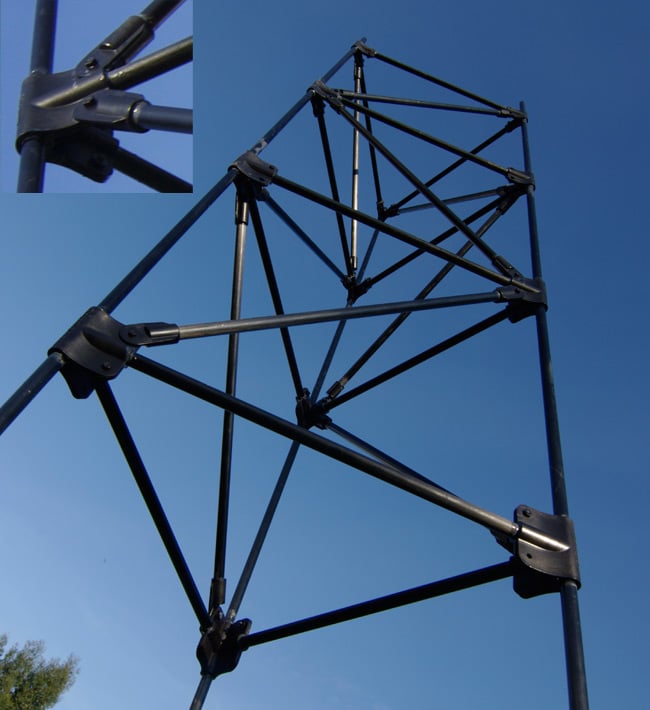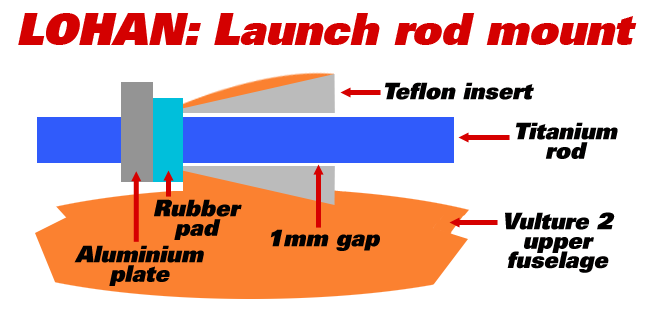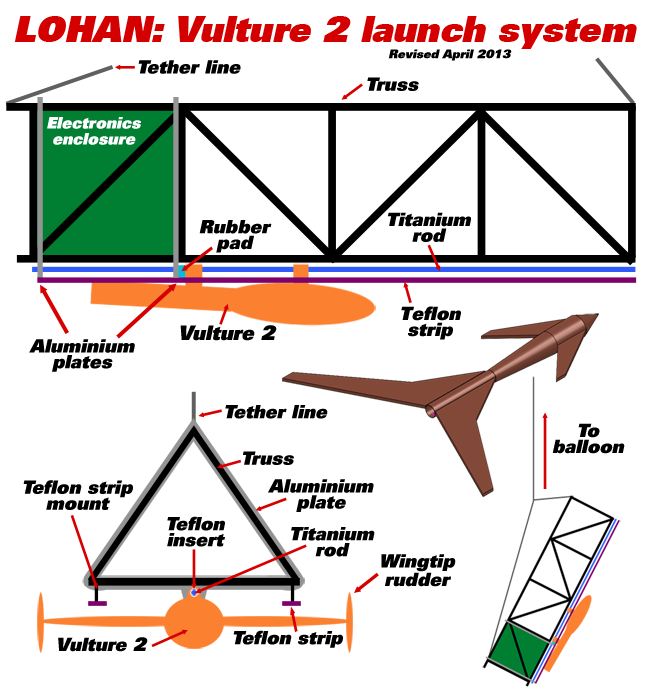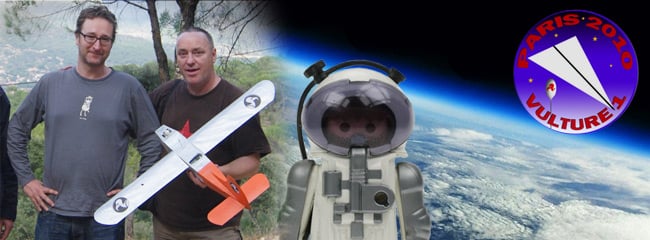This article is more than 1 year old
LOHAN must suck juice while mounted on rigid rod - but HOW?
Possible hot coupling for Vulture 2
Over the past couple of weeks, the Low Orbit Helium Assisted Navigator (LOHAN) team has been chewing the fat with readers over just how to hook up the Vulture 2 spaceplane's rocket motor heater.
There's more on the current state of play with the heater right here, and a roundup here of your suggestions for connecting the thing to its 12V battery in a way that isn't going to impede our aircraft's launch.
We've got plenty of options on the table, and the jury's still out on a final decision. My personal preference is for a magnetic solution, although plenty of you favour mechanical coupling, such as sprung metal strips.
While we mull, we're still considering new proposals, and this one from StampedChipmunk caught our eye:
I may be missing something but why not use the blast plate for the power transfer?
Instead of it being one piece of aluminium, why not have it split electrically in two (perhaps a chunky circuit board with two big pads) and then have two spring loaded copper pads (use biro springs) in the rear of LOHAN that then transfer the power to the heater (with the whole thing being held in the rear of the plane, which makes for easier wiring).
So long as Lohan remains in contact with the blast plate, the power should be transferred. The only difficulty I can see is if Lohan slides away from the blast plate during her ascent, but this would also affect the performance of the rocket motor so may have already been solved... In fact the contact pads may actually help protect Lohan from any lateral buffeting she may receive during the ascent...
Stoneshop responded:
I was just thinking along the same lines. As Lohan's guide rod is supposedly pointing heavenwards, the craft itself will 'lean back' against the launch plate. With a pair of springs mounted there pushing against contact pads on Lohan's posterior, you should get good enough contact to run the 0.2A the heater requires.
Well, it's an ingenious idea, but sadly it doesn't have legs. Since the elite Southampton Uni Vulture 2 design team offered a first peek of the spaceplane's design, we've been able to update our launch system concept graphic and LOHAN mission summary to better reflect how the thing will actually work:
To summarise for LOHAN newbies, the Vulture 2 "hangs" on a titanium launch rod which passes through two aluminium plates attached to the carbon fibre fantastical flying truss.
This allows the aircraft to rock slightly on the ascent, preventing it freezing to the rod. Teflon strips (most likely backed by foam, not shown) run longitudinally along the underside of the truss, preventing the wings hitting the truss during ascent and launch. Note that while the rough planform of the Vulture 2 seen above doesn't show wingtip rudders, rest assured the finished article will indeed boast these vital stabilisers.
Our improved graphic shows how the titanium rod and the Vulture 2 sit as close to the underside of the truss as possible; we've lowered the Teflon strips to minimise the gap between them and the wings.
The above pic is not to scale, and how it finally goes together depends on the finished spaceplane. We do, though, have the basic truss assembled from a 12.5mm carbon-fibre rod, held together with off-the-shelf fittings and mighty Scotch-Weld 2216 Epoxy.
Here's a photograph of the constructed carbon-fibre flying truss, with a close-up of the joints inset:

One critical component of the launch rig is the rubber pad that stops the Vulture 2 doing itself some damage against the fore aluminium plate. Here's a rough diagram of how that will work:

There's a Teflon insert in the plane's upper fuselage, through which the titanium rod passes. The conical shape is to make sure the forward motion of the aircraft doesn't rip the insert out. The 1mm gap ensures the plane doesn't jam on the rod*.
The aircraft isn't, therefore, in contact with the aluminium plate. Although we could use the plate to conduct 'leccy from the battery to the heater, that would require a hookup from the plate to the aircraft, and that offers no advantage over using a couple of wires.
So, we'll continue to explore workable heater hookup options, and let you know how we get on. In the meantime, your input is, as always, warmly welcomed. ®
Bootnote
* In case you're concerned that ice may build up in the gap between the insert and rod, tests have shown that a liberal application of Molykote 33 low-temperature grease addresses that problem. Even with a test steel rod and insert half encased in ice, the grease prevented the formation of large water crystals.
Further LOHAN resources:
- New to LOHAN? Try this mission summary for enlightenment.
- You can find full LOHAN coverage right here.
- Join the expert LOHAN debate down at Reg forums.
- All the LOHAN and Paper Aircraft Released Into Space (PARIS) vids live on YouTube.
- For our SPB photo archive, proceed directly to Flickr.
- We sometimes indulge in light consensual tweeting, as you can see here.










